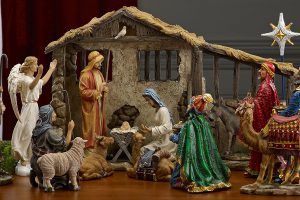
Many people, especially those outside Ethiopia, think that there is only one New Year, i.e. at the end of December. In Ethiopia, we are accustomed to celebrating two New Years, namely at the end of December and the end of the 13th month of Puagme or the beginning of Meskerem which means the second week of September.
The difference is partly due to the discrepancy between the Gregorian and the Julian Calendars. It is in the latter calendar that the Ethiopian New Year falls. It is not clear whether the same pattern exists in other countries where the Julian Calendar applies.
What are the characteristics of the Ethiopian New Year? Torches made of twigs are burnt by families living in the same compound. When persons light the torch in a coal oven, they are expected to say a word or two wishing that the old year go with all of its evil characteristics and the new one come in with all the best things it might have in store. Around a bonfire in the middle of the compound fitting songs are sung with chorus that are uttered or chanted every year.
Grass, mostly cut fresh from the field and tied together, are dispersed on the floor to create a festive mood. Special dishes are also prepared for the event and are enjoyed in groups.
The description given above is scanty. It does not measure up to everything that is said or done on the occasion. For example, popcorn is fried by woman and served to all those present as a sign of exceptional hospitality and a mark of respect. Only on such rare times are pop corns resorted to. For this reason, they are not sold cheaply in the market. The price of green grass may double or treble. The yellow flower, the precursor of the end of the rainy period is often sold with the grass.
The Ethiopian New Year could mean different things to different people. For students, it is a time for preparation to face the challenges of the new academic year. Similarly, individuals vow to achieve their objectives in the year that follows. However, it is not easy accomplish what they planned. So, plans remain mere wishful thinking for a good number of people.
In a society like ours group interests weigh heavily upon individual thinking and preoccupations. Hard-working men and women who give uppermost attention to their daily schedule could be persuaded to move along with others for social gathering or related events and programs. Thus, what they had planned for the year to be carried out on a daily basis could be sacrificed by group pressure.
Agendas are interesting aspects of work accomplishments. These refer to either notebooks or diaries where programs and appointments are written. Unless strict attention is paid to them by controlling daily, weekly, and monthly performance, very little is achieved during the year.
It must not be forgotten at the same time that the coming year could come with challenges and surprises of its own. Only very few people could have the insight to predict the future. Most of us live according to the dictates of the day. That is why a new year is welcomed with mixed feelings of optimism as well as pessimism. But it is always better to receive the year with hope and expectation. Good dreams can shape the future.
Concerning Ethiopian agendas of the smallest size, they not only give numbers related to days, but also to nights and what they describe as the moon. The numbers grow by the day and so do those of the night and the moon. Phenomenal changes indicated by such agendas need to be studied very carefully. Knowledge of calculating time according to the Ethiopian calendar and determining which holiday falls on which particular day is not a matter to be viewed lightly. It has to be taught and passed from generation to generation.
This brings us squarely to the necessity of examining the 13th moth of the Ethiopian year known as Paugme which helped to give semblance to the once touristic-initiated motto of “Thirteen months of sunshine”. It is not a full month. It is sometimes composed of six days and sometimes of five. In the Gregorian calendar the days are distributed to those moths which have 31 dates with the exception of February which sometimes has 28 and sometimes 29.
“Land of Origin” appears to be a better alternative to the previous motto, but it must be noted that the preceding one had played a crucial role as a catchy phrase. The new motto directly refers to Lucy which was discovered by Prof. Johanson who came to Ethiopia alone to do his work. It is sometimes thought that he either led a team of scientists or he was a member of a group of scientists that explored in Afar to discover Lucy. What new things will come up in this area as well as in others in the year to come is hard to predict.
By welcoming the New Year, we look into the future with hope. At the same time, we may have many projects that have been began on a personal level that need to be accomplished. These projects will have to be carried forward to the next year to give meaning to our lives. Otherwise, we will continue to begin and never finish things.
What is the best way to conclude this article? I think there is no better way than to express thanks and best wishes to people who are closely associated with our lives. As far as I am concerned, I thank the management and staff of The Ethiopian Herald for giving me this amount of space to convey my feelings about the coming year in which I wish them every success in all their endeavors. Copyright © Berhanu Tibebu Zewolde, 31 August 2019.
The Ethiopian Herald Sunday September 8/2019
BY BERHANU TIBEBU ZEWOLDE





